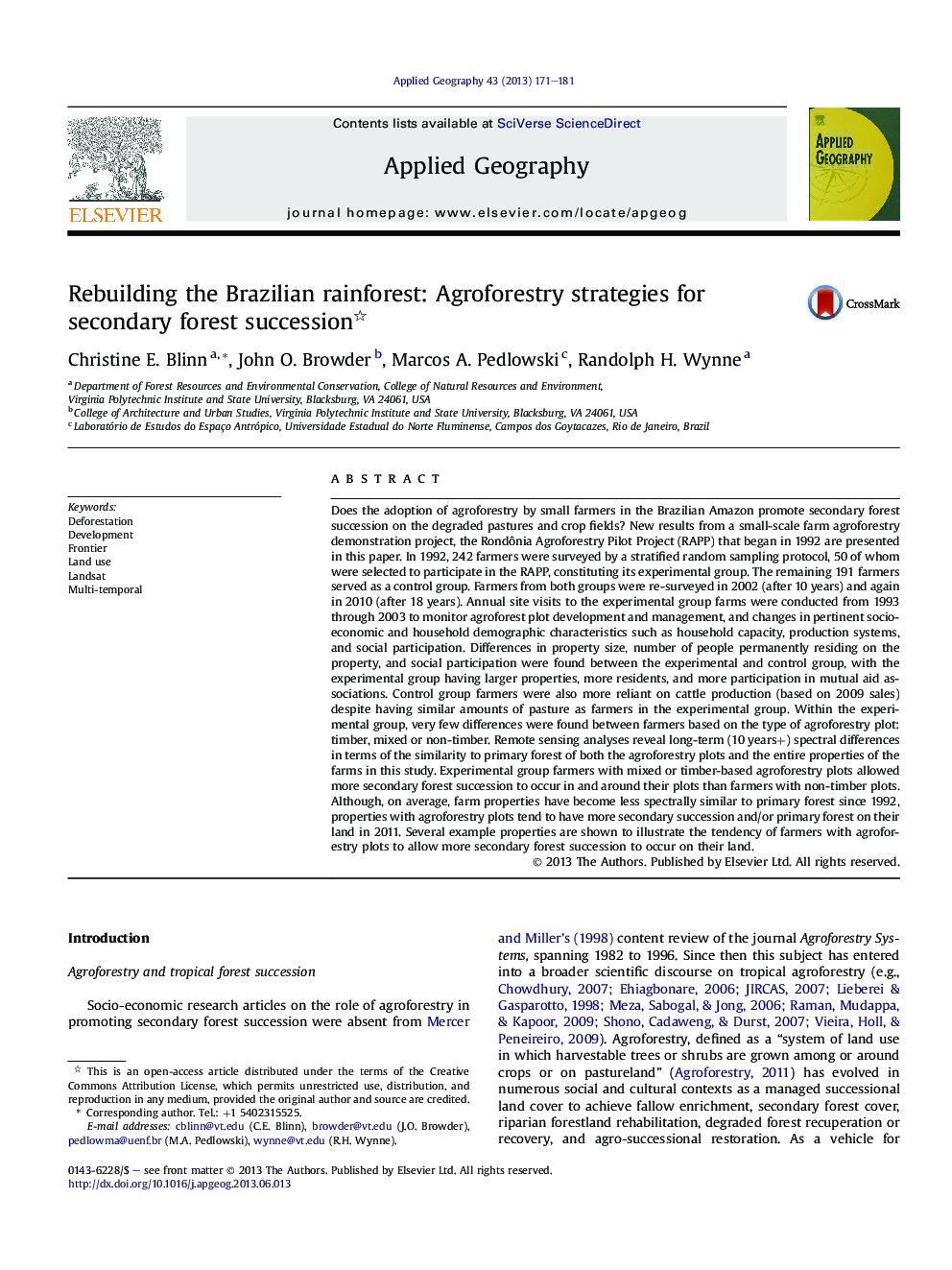| Article ID | Journal | Published Year | Pages | File Type |
|---|---|---|---|---|
| 6538871 | Applied Geography | 2013 | 11 Pages |
Abstract
Does the adoption of agroforestry by small farmers in the Brazilian Amazon promote secondary forest succession on the degraded pastures and crop fields? New results from a small-scale farm agroforestry demonstration project, the Rondônia Agroforestry Pilot Project (RAPP) that began in 1992 are presented in this paper. In 1992, 242 farmers were surveyed by a stratified random sampling protocol, 50 of whom were selected to participate in the RAPP, constituting its experimental group. The remaining 191 farmers served as a control group. Farmers from both groups were re-surveyed in 2002 (after 10 years) and again in 2010 (after 18 years). Annual site visits to the experimental group farms were conducted from 1993 through 2003 to monitor agroforest plot development and management, and changes in pertinent socio-economic and household demographic characteristics such as household capacity, production systems, and social participation. Differences in property size, number of people permanently residing on the property, and social participation were found between the experimental and control group, with the experimental group having larger properties, more residents, and more participation in mutual aid associations. Control group farmers were also more reliant on cattle production (based on 2009 sales) despite having similar amounts of pasture as farmers in the experimental group. Within the experimental group, very few differences were found between farmers based on the type of agroforestry plot: timber, mixed or non-timber. Remote sensing analyses reveal long-term (10 years+) spectral differences in terms of the similarity to primary forest of both the agroforestry plots and the entire properties of the farms in this study. Experimental group farmers with mixed or timber-based agroforestry plots allowed more secondary forest succession to occur in and around their plots than farmers with non-timber plots. Although, on average, farm properties have become less spectrally similar to primary forest since 1992, properties with agroforestry plots tend to have more secondary succession and/or primary forest on their land in 2011. Several example properties are shown to illustrate the tendency of farmers with agroforestry plots to allow more secondary forest succession to occur on their land.
Related Topics
Life Sciences
Agricultural and Biological Sciences
Forestry
Authors
Christine E. Blinn, John O. Browder, Marcos A. Pedlowski, Randolph H. Wynne,
